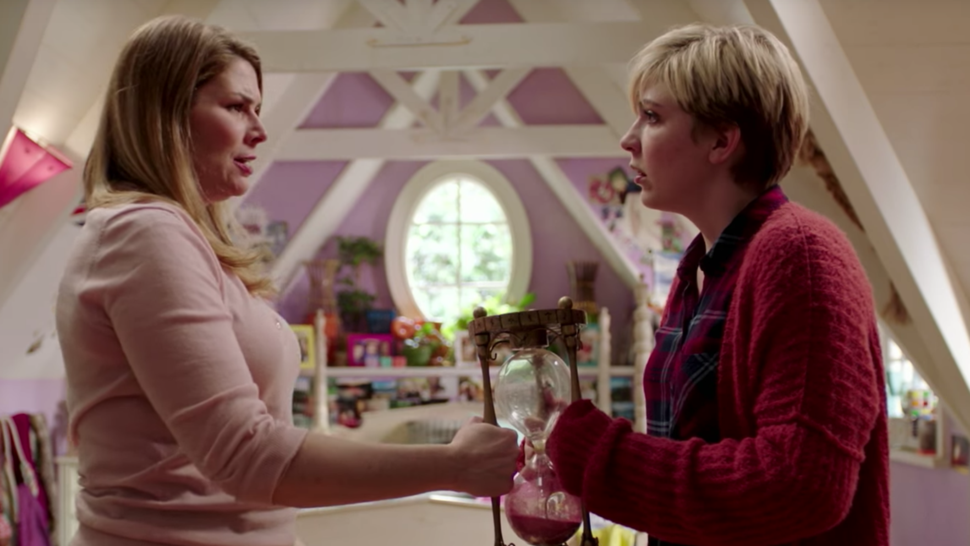In 2004, Disney Theatrical Group began licensing titles—distributing scripts, scores, tools for theatres around the country (and globe) to create their own productions of Disney titles—beginning with Beauty and the Beast as the first full-length title. Since then, Beauty and the Beast has played more performances than the four longest-running Broadway shows combined.

Disney musicals are so pervasive, so woven into the fabric of Americana, that 38 percent of the U.S. population have engaged with a licensed Disney show either as part of the cast, crew, or audience. Just weeks ago it was announced that Beauty and the Beast was the most-produced musical in high schools across the country, The Little Mermaid the third most-produced; Peter and the Starcatcher was the third most-produced play, surpassing the classic Our Town.
“This is the new American songbook,” says Thomas Schumacher, producer and president of Disney Theatrical Productions. “We are this new era of Broadway.” It’s true. Disney animated musicals practically raised the next generation of ticket-buyers, be it for Broadway or regional productions or as parents at school productions. “When you see the affection that 30-year-olds and 35-year-olds have when they go to Broadway shows, it’s impossible to separate that from two things: MTV, when it actually showed music videos, and Disney-animated musicals.”
Disney licensing works in two ways: the licensing of shows created and mounted by Disney (typically on Broadway) that play professionally around the world and remain supervised by Disney (think of The Little Mermaid playing Japan or any of the six overseas productions of The Lion King) and the licensing where Disney creates a score, script, and production concept—worked out onstage in smaller markets—for others to mount however they will (think The Hunchback of Notre Dame).
Rooted in Disney or not, licensing is key to the longevity of all musical theatre. Those photos of now theatre stars and award winners in school productions of Pippin and Fiddler on the Roof shared on the 2018 Tony Awards broadcast are a result of those titles being licensed to schools and community theatres. Theatre happens everywhere.
“I grew up doing this stuff,” says Schumacher. Despite some reticence to license in the earlier days, with folks concerned about the quality of outside productions, Schumacher felt just the opposite: that licensing would preserve artistic integrity. “With licensing you have a standard,” he says. “My affection is so deep and I kept trying to say, within the company, ‘[Licensing] won’t degrade it. It’s actually going to build affection for it.’
“The care with which these materials are prepared and the assistance the teachers get—these remarkable men and women around the country who are running these theatre programs—it makes them love this stuff,” Schumacher continues. “They learn to literally walk a mile in someone else’s shoes. All the soft skills that you need, they’re learning.”
And, in a time where towns continue to slash or discontinue arts budgets entirely, Disney’s licensing model provides an invaluable resource to continue the legacy of theatre and build a sense of community around it. In addition to a title’s script and score, “we have choreography DVDs, there’s four different ideas of how to do a flying carpet in Aladdin, how you can do these scenes in Beauty and the Beast. We do karaoke disks, so we can have an orchestra if you don’t have all those resources.”
What’s more, Disney has invested in the creation of junior and kids versions of beloved works. Aladdin JR., 101 Dalmatians KIDS ,The Jungle Book KIDS, and Cinderella KIDS were all launched at the same time as Beauty and the Beast in 2004. “We can reduce shows down, make them singable, make them produceable, and make it possible,” says Schumacher. “The rules are different in Pop Warner football than they are in the NFL. We have touch football. We have flag football. We have tackle football. There’s no reason why we shouldn’t do the same theatrically.”

Disney’s catalog includes 35, the nost recent being two versions of Freaky Friday, the mother-daughter body swap story based on the books by Mary Rodgers. Having developed a Freaky Friday stage musical specifically for licensing purposes, the Disney Channel (looking for its next original movie) wound up using the stage show as a launchpad for its made-for-television musical adaptation, which also premieres August 10 on the Disney Channel starring Broadway’s Heidi Blickenstaff and Cozi Zuehlsdorff. The junior version will reflect the Disney Channel Original Movie and the full-length version, which enjoyed a five-city U.S. tour in 2017 and includes more scene work and about five more songs from award-winning Broadway songwriters Tom Kitt and Brian Yorkey.
That launch in 2004 was truly a gamechanger in the contents of the theatrical landscape. There have been over 90,000 licensed productions of Disney titles in the U.S. and Canada—over 250,000 performances in all. “These titles bring people to theatre.” As Schumacher points out, “They don’t know if it was on Broadway or not, they want to see a great show with a great title they know.”


As Broadway theatres continue to fill with successful productions that remain popular for years on end, Disney Theatrical Group wants to continue to feed the theatre with new work—even without Broadway aims. The list of titles in consideration for development for a licensing track is long. As the decision-maker, Schumacher says the choices are a combination of audience demand and artist ambition. “You don’t want to do something that nobody wants to see,” he says. “And then it’s when there are artists who align with [a project]. The fact that Tom Kitt and Brian Yorkey wanted to do Freaky Friday [made it worth doing]. Artists want to write and create things that are interesting.” No matter the size of the spotlight on the stage in the end.
“Is it going to drive enthusiasm, connection, enlightenment, engagement, and commitment to our craft?” says Schumacher of questions guiding his team. “That’s what we can do.”
